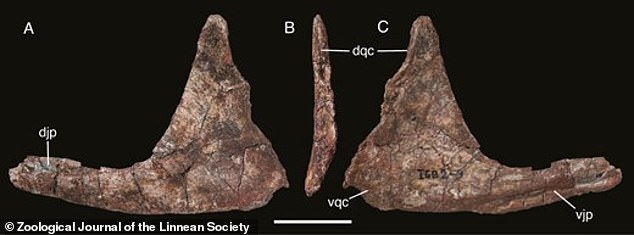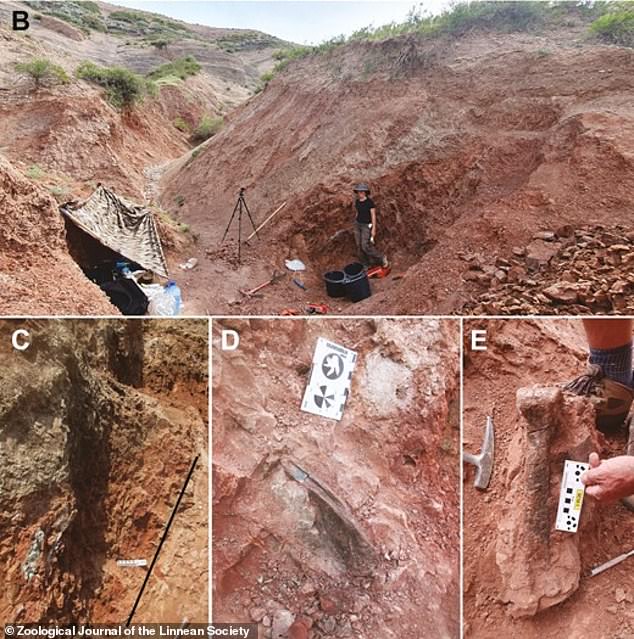Cara Delevingne, Eat Your Heart Out! Terrifying Dinosaur With ‘Distinctive Eyebrows’ Roamed Earth 165 Million Years Ago, Study Finds
- The large predatory dinosaur was a distant cousin of the fearsome T.Rex
When it comes to eyebrows, this dinosaur might just give Cara Delevigne a run for her money.
Experts have discovered a large predatory dinosaur that roamed Kyrgyzstan in Central Asia 165 million years ago and had some very impressive eyebrows.
The first remains of the fossil were discovered in 2006 in the mountainous desert areas near the city of Tashkumyr.
During several excavations, paleontologists have unearthed skull bones, pelvic vertebrae, fragments of the dinosaur’s shoulder, forelimbs and hind limbs, which would have been about 9 meters (30 feet) long.
Research now shows that it is a new species, but that it belongs to the group of theropods, making it a distant cousin of the fearsome T-Rex.
Experts have discovered a large predatory dinosaur that roamed Kyrgyzstan in Central Asia 165 million years ago and had some very impressive eyebrows (artist’s impression)

When it comes to eyebrows, this dinosaur might just give model Cara Delevigne (pictured) some heat
The most striking feature of this species, Alpkarakush kyrgyzicus, is an unusual brow bone that most likely contained a horn, the researchers said.
‘Alpkarakush can be identified by an extremely developed eye socket,’ they wrote.
The remains of a slightly smaller specimen were also found at the site.
Examination of the bone structure revealed that the larger specimen was nearly adult, at least 17 years old, while the smaller specimen was a juvenile.
The team suspects they may have found a parent and their offspring.

Analysis of the dinosaur’s fossilized remains suggests it may have been up to 9 meters long

The name Alpkarakush kyrgyzicus comes from a species with its most striking feature: an unusual brow bone (pictured) that most likely contained a horn, the researchers said.
The discovery of the specimen is surprising because no large predatory dinosaurs have been found in the Jurassic region between Central Europe and East Asia until now.
Professor Oliver Rauhut from the Bavarian Collection for Palaeontology and Geology in Munich said: ‘This discovery fills a major gap in our knowledge of Jurassic theropods.
‘It provides us with important new insights into the evolution and biogeography of these animals.’

The first remains of the fossil were discovered in 2006 in the mountainous desert areas near the city of Tashkumyr
The fossil is named after Alpkarakush, a giant bird from a mythological Kyrgyz poem that often comes to the aid of heroes in critical moments.
The species name ‘kyrgyzicus’ refers directly to the Kyrgyz Republic, the origin of the new predatory dinosaur.
Digital 3D models of the discovered bones have been created and made available online, allowing researchers around the world to conduct further studies.
The findings were published in the Zoological Journal of the Linnean Society.
